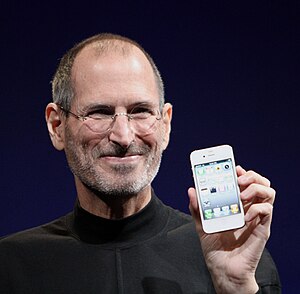Goldin filed a lawsuit against the RJ Reynolds Tobacco Co for using this magic trick in an advertisement and explaining how it worked. According to an article in The New York Times from March 1933, Goldin, who had won a patent for the illusion a decade earlier, asserted that the ad had adversely affected his ability to get people to see his shows. He asked for $50,000 in damages. (That's about $865,000 in today's dollars.)
I thought about Goldin last week as I sat in a federal courtroom here in the capital city of Silicon Valley. I listened to evidence presented in a patent lawsuit that Apple has brought against Samsung Electronics. Apple claims that Samsung copied its designs for the iPhone and the iPad.
You see, even just by filing his patent, and then using it to litigate, Goldin publicly drew attention to the secrets of his profession. Apple, by going to a jury trial to defend the patents of its most prized products, is also allowing competitors and the public to see inside one of the most secretive companies in the world.
Steve Jobs, the co-founder of Apple, was very much in the mould of a magician. People often spoke of being sucked into a "reality distortion field" as he pitched his new products. Anyone who closely watched those dramatic announcements may recall how he repeatedly used the word "magical" to describe his latest devices.
The way the audience oohed and aahed during his performance was as if Jobs was saying: "Step right up! Ladies and gentlemen. Boys and girls of all ages! See the latest magical Apple device. You can stretch your fingers on the flat screen and zoom into a photo or map!"
More oohs and aahs.
It was, after all, Arthur C Clarke, the science fiction author, who once said, "Any sufficiently advanced technology is indistinguishable from magic." And as Jobs knew so well, one thing that makes magic so, well, magical, is that you don't know how it works. It's also one reason Apple is so annoyingly tight-lipped.
Based on early depositions and courtroom documents that have been submitted for the Apple v Samsung trial - including photos, emails and prototypes - we're starting to learn just how Jobs pulled off his tricks.
On the first day of the trial, Christopher Stringer, a longtime industrial designer at Apple with a flair for the theatrical - he wore an ice-cream-white suit - explained the process the company goes through to create these prototypes.
For example, 15 or 16 designers worked together around a kitchen table. When time came to plan the devices, the company tried almost everything. There are iPads of various exaggerated shapes and sizes. They are white, black or metallic. One iPad has a strange stand that protrudes from the back.
Some of the early prototypes of the iPhone are bizarre. One, a long black rectangle, looks as if it is twice the size it should be. Others have beautifully curved glass screens. Another resembles an old silver iPod that just happens to be a phone, too. And there's the strangest of all: an iPhone that looks like a stretched hexagon made of cheap black plastic.
While in court Friday, Philip W Schiller, Apple's senior vice president for worldwide product marketing, pulled the curtain further back when he divulged the company's advertising budgets - often more than $100 million a year for the iPhone alone. Also at the hearing, Scott Forstall, senior vice president for iPhone software, explained that the early iPhone was called "Project Purple." Forstall said it was built in a highly secure building on Apple's campus. A sign on the back of the building read "Fight Club." Behind the security cameras and locked doors, most employees on the project did not even know what they were working on.
This is just the beginning. There will be weeks of trials and other executive inquisitions that will explain how other magic tricks work inside Apple.
For its part, Samsung accuses Apple of copying from Sony - Sony! - and other electronics makers. It even sent out a news release containing evidence that the court would not allow to be presented before the jury that showed what it says is truly behind the magic.
It seems that even if Apple wins the patent case against Samsung, it may find itself in the same pickle that Goldin did 80 years ago.
Although the federal court threw out Goldin's claim in 1938, the damage had already been done. Besides the large legal fees, the news media brought more attention to how the magic trick of sawing a woman in half actually worked - it was no longer magical. (The secret involved two women. The first woman's feet protruded from the base of the box, the other's head stuck out of the top.)
Years later, when Goldin developed a new illusion in which a giant buzz-saw blade appeared to cut through a woman who was not even enclosed in a box, he chose not to file a patent. He didn't follow up with any litigation against people who tried to copy or use his trick. He had learned it didn't pay to protect his secrets that way.
By showing the public how it designs products that twice radically changed the electronics industry, Apple has risked losing some of its magic.
Edited By Cen Fox Post Team





















.jpg)

















